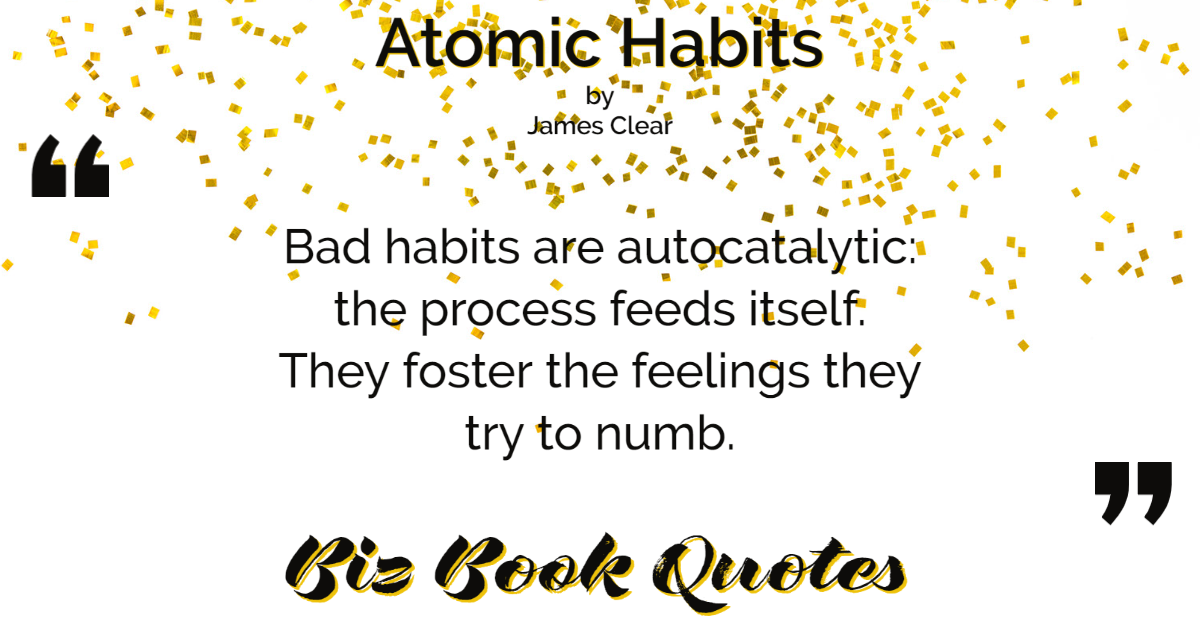|

|
Atomic Habits:
’Disciplined’ people are better at structuring their lives in a way that does not require heroic willpower and self-control.
|
93 |
|

|
Atomic Habits:
Once a habit has been encoded, the urge to act follows whenever the environmental cues reappear. This is one reason behavior change techniques can backfire.
|
93 |
|

|
Atomic Habits:
If you’re not careful about cues, you can cause the very behavior you want to stop.
|
93 |
|

|
Atomic Habits:
Bad habits are autocatalytic: the process feeds itself. They foster the feelings they try to numb.
|
93 |
|

|
Atomic Habits:
Once you notice something, you begin to want it. This process is happening all the time – often without us realizing it.
|
94 |
|

|
Atomic Habits:
Once the mental grooves of habit have been carved into your brain, they are nearly impossible to remove entirely – even if they go unused for quite a while.
|
94 |
|

|
Atomic Habits:
One of the most practical ways to eliminate a bad habit is to reduce exposure to the cue that causes it.
|
94 |
|

|
Atomic Habits:
Self-control is a short-term strategy, not a long-term one. You may be able to resist temptation once or twice, but it’s unlikely you can muster the willpower to override your desires every time.
|
95 |
|

|
Atomic Habits:
This is the secret to self-control. Make the cues of your good habits obvious and the cues to your bad habits invisible.
|
95 |
|

|
Atomic Habits:
Remove a single cue and the entire habit often fades away.
|
95 |











